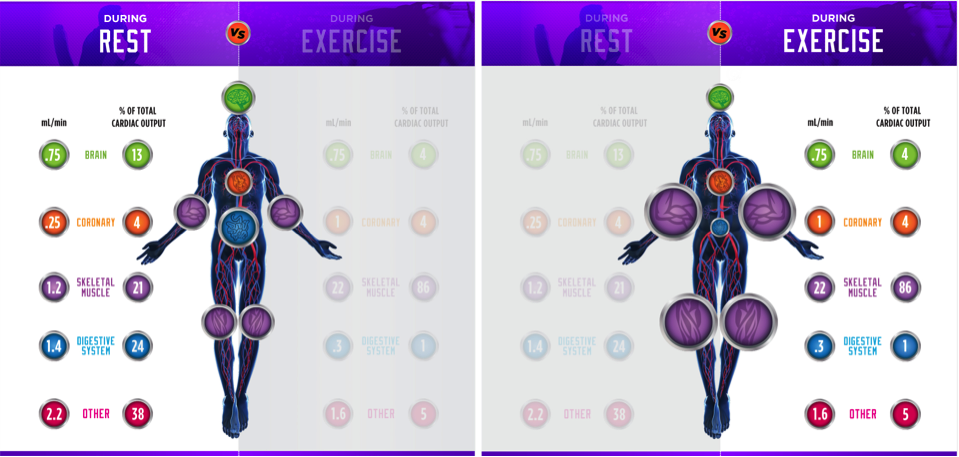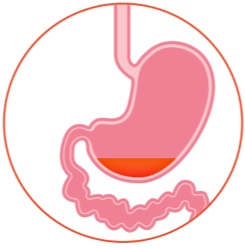
29 Oct STOMACH and INTESTINAL UPSET in ATHLETES – THINGS YOU SHOULD KNOW
If you are an athlete, and you train hard in a variety of environmental conditions, chances are you may have experienced an upset stomach, cramping, diarrhea, or other uncomfortable GI distress at some point in your athletic career. GI distress can be caused by a number of different factors. For these purposes we will limit discussion to those commonly associated with athletic endeavors.
Basically we are talking about pain, cramps, bloating, flatulence, and of course diarrhea, a.k.a. the runs, either in isolation or in some combination which may impact you at the most inconvenient time during your training or competitions.
The main factors that may contribute to GI distress are:
- • Blood flow to the gut
- • Type of food stuffs consumed
- • Fluid volume
- • Other ergogenic substances, e.g. caffeine
- • Temperature
Blood Flow- During exercise, we need to take into account changes in blood flow in the GI tract that occur as a mechanism to shunt blood from the gut to skeletal muscles to address the increased energy needs of the muscle tissues. It has been estimated that during exercise, blood flow in the GI tract may decrease as much as 70%, in an attempt to provide oxygen and nutrients to high consumption tissues, such as muscle.
Figures 1a & 1b depict the relative difference in blood flow, as a function of cardiac output, at rest and when exercising.
Blood Flow Distribution: Figure 1a – At Rest, Figure 1b – During Exercise
Figure 1a Figure 1b
Your GI system is not, without proper conditioning, well equipped to digest food and absorb fluids with a reduced blood flow, which may cause problems during exercise. Your system does however have an affinity for glucose during exercise because glucose is a key component in the production of energy. Other factors impacting blood flow are more mechanical in nature, such as body position on a bike, or seat position in a rowing shell. Compression forces on the abdominal cavity may also play a role in further impeding blood flow to the gut. So take note of your body position if you find you are experiencing GI issues.
Type of Food stuffs (Nutrition) Consumed –
What you eat and drink immediately before and during training or competition may have a direct influence on gastric tolerance. In particular, the type and concentration of carbohydrate can influence the functioning of your gut. With respect to type of carbohydrate used for energy provision and replenishment, depending on activity duration, you should try to avoid carbs that are known to be GI irritants. Fructose, or fruit sugar for example, is a sweet sugar found in many sports nutritional products. It also happens to be a well-known irritant to the stomach and intestine. Athletes with sensitive stomachs may want to avoid fructose during training or competition. Glucose on the other hand is well tolerated and will provide the most immediate source of energy. Many athletes utilize a mixture of simple and complex carbohydrates. Simple carbohydrates (e.g., glucose) will provide immediate energy, whereas complex carbohydrates (due to their slower processing / additional metabolic steps) may provide a delayed and less predictable release of energy to the body. Finding the right ratio, and timing the consumption, of simple and complex carbohydrates to meet your varying needs may be challenging. Considering; the blood flow discussion above, the additional metabolic steps required to make the fuel in complex carbs available for energy conversion, and the duration of the event, athletes may be finding themselves under fueled at the wrong time. A solution to the timing problem is to use delivery systems, such as XRCEL Athlete Fuel, that utilize only simple carbohydrates (e.g., glucose) but which are able to be “tuned” to provide both an immediate release for immediate energy needs and an extended release to continue maintenance of energy. This type
of delivery system combines the ease of the body processing simple carbohydrates with the ability to provide both immediate and sustained energy.
Regarding nutrition form and volume: because athletes will experience both a decrease in gastric blood flow and
a decrease in digestion during exercise, they should be cognizant of
the form and volume of nutrition taken in and its propensity to cause GI distress. Formulations that are easily and efficiently digested and provide the maximum amount of energy in the least volume and in a form that is less upsetting to the GI system are preferred. XRCEL® utilizes its patented extended release delivery system and a controlled volume to help athletes find their optimal “sweet spot” in carbohydrate based nutrition.
Fluid volume – Your stomach can hold approximately 1 liter (a little more than a quart) of fluid. Ideally, it likes to have 125-180 ml (4-6 oz.) to maintain good gut motility. Too much fluid may cause bloating and cramping, and may lead to other undesirable side effects. It will be important to know what volume your digestive system can tolerate and under what conditions so you don’t get into trouble on race or game day. Knowing your tolerance levels and hydrating with the appropriate volumes, and frequency, will be a key factor in GI function and athletic success.
Understanding how your body functions, and; what, when, and how to replenish critical nutrients and fluids is paramount to sound GI function and will be a significant contributor to your athletic performance.










No Comments